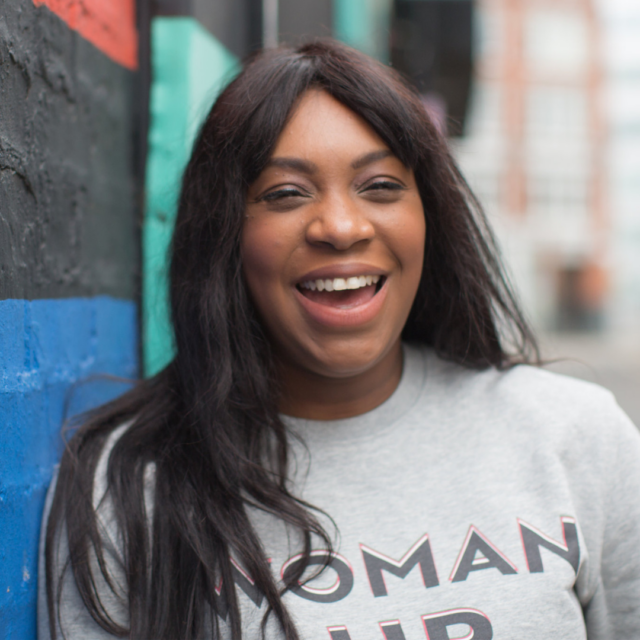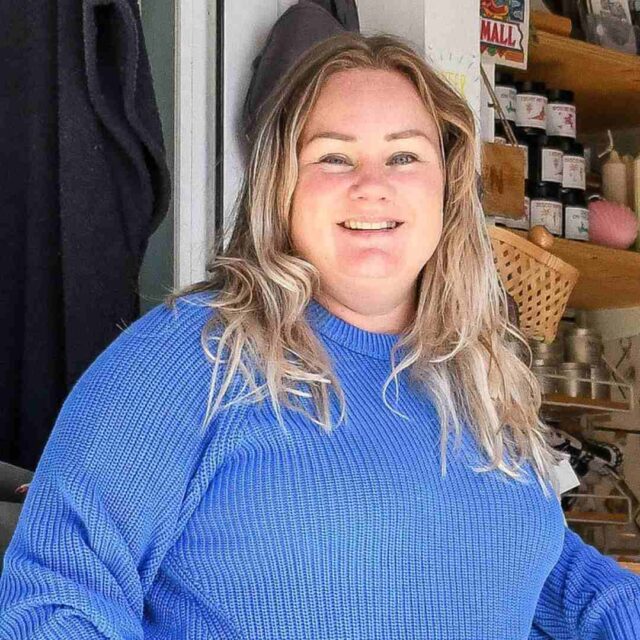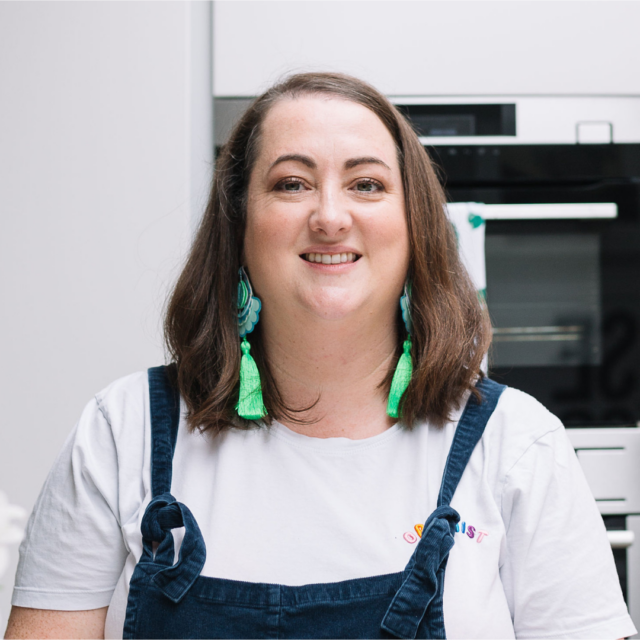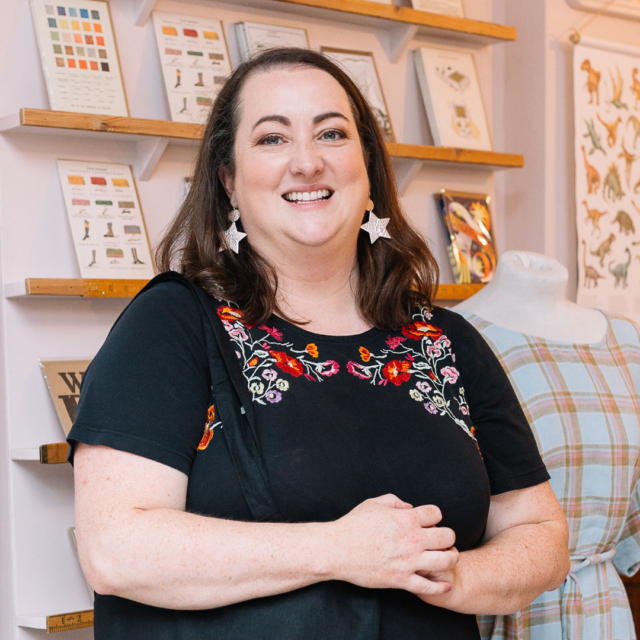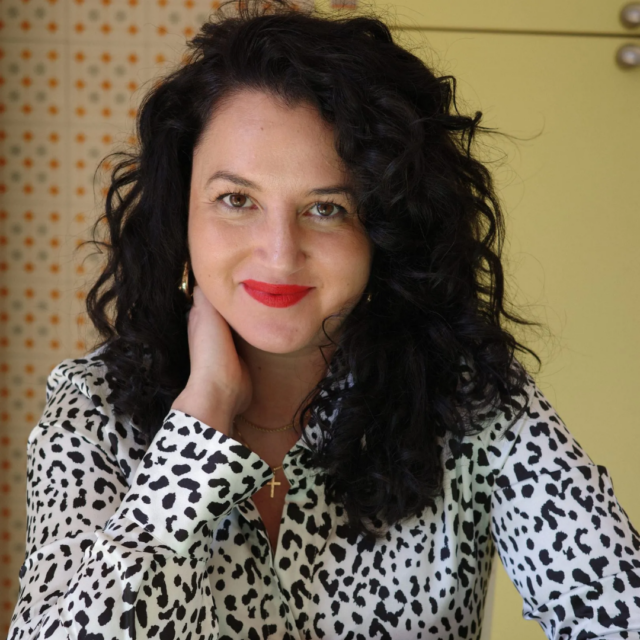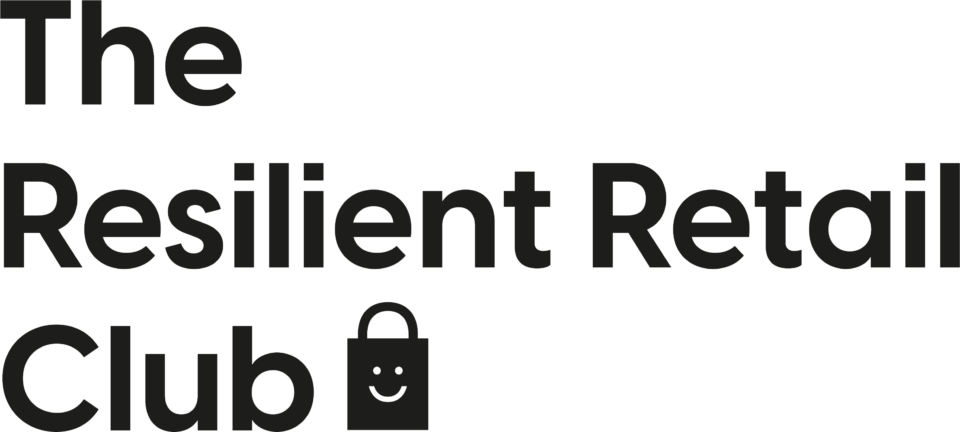Uncovering What Your Customers Really Want with Katie Tucker
Catherine Erdly: Do penguins eat peaches?
Hi, I’m Catherine Erdly. You’re listening to the Resilient Retail Game Plan podcast, and I’m your host, as well as the founder of the Resilient Retail Club, which is my membership group and mastermind for product businesses. You can find out more at resilientretailclub.com.
Do they?
Do penguins eat peaches? Have you ever wondered that? Maybe not, but have you ever been really curious about something and set out to get the answer. Maybe you’ve been wondering, will my customers buy this? Will they like this new product line I’m developing or purchasing in? Or what, quite simply, do my customers want to see from me?
We often get told that we need to talk to our customers to understand them. It’s advice I’ve certainly given out a lot in my lifetime, for sure. But what do we actually say? How do we even figure that out? And how do we get people to share information with us that is genuine, true. How many times have you maybe asked people, do you like this?
And they’ve all said yes. And then nobody bought it. If that sounds familiar or if you’ve ever wondered how best to get information out of customers and to satisfy that curiosity, then you definitely want to listen to today’s episode.
I’m joined by Katie Tucker. She is an author and a market research expert and her book, “Do penguins eat peaches?” Is an absolutely phenomenal practical guide for small business owners when it comes to answering that all important question, which is what do my customers want?
And another important question, are they prepared to buy it from me?
Welcome to the Resilient Retail Game Plan, a podcast for anyone wanting to start, grow or scale a profitable creative product business with me, Catherine Erdly. The Resilient Retail Game Plan is a podcast dedicated to one thing, breaking down the concepts and tools that I’ve gathered from 20 years in the retail industry and showing you how you can use them in your business. This is the real nuts and bolts of running a successful product business, broken down in an easy, accessible way. This is not a podcast about learning how to make your business look good. It’s the tools and techniques that will make you and your business feel good.
Confidently plan, launch and manage your products and feel in control of your sales numbers and cashflow to help you build a resilient retail business.
Welcome Katie Tucker, business consultant and author of Do Penguins Eat Peaches?
Catherine Erdly: Katie, welcome to the resilient retail game plan podcast. I’m so excited for our conversation today. Do you want to start us off by introducing yourself and what you do?
Katie Tucker: Yeah, so I am Katie Tucker, and I am an author, like to say that now and a business consultant. I specialize in supporting businesses to understand their customers. So that can be big businesses and that can also be small businesses because ultimately, if we don’t know what they want, then we can’t sell them what they need and they won’t pay for it.
Catherine Erdly: This is the fundamental building block of businesses, right?
Katie Tucker: It is absolutely.
Catherine Erdly: Fantastic and toyes day we are ing to be talking today about your book, Do Penguins Eat Peaches? I love the title, but you got your copy too. And also I have to give you a shout out for anyone, if you want any other reason to buy the book, there’s a very fabulous flip book.
As you flip the pages, you see the penguin balance playing keepy uppy with a peach, which is when I saw that, I was like, Oh, genius. I don’t know why I didn’t think about that for my book, but absolutely genius and a fabulous book. I really enjoyed it. And I think there’s so many valuable insights here for any product business owner or retailer who’s heard me say in the past, know your customers, get to talk to your customers and you’d think how do I even structure that? So do you want to start off by just giving us a bit of overview of your background and what led you to write the book in the first place? Um,
How did Katie get involved in customer research?
Katie Tucker: Yeah absolutely, so I spent quite a long time in the corporate world. In a team that some people might be familiar with, product management. So its really understanding your customer, and making sure that we are building what they want. and that they are going to buy. and customer discovery is one element of that and I got like really interested in how even big companies were just having this kind of top down approach and oh We think this is a good idea and then spending, millions. We’re not talking about thousands, but millions of pounds on digital products or physical products for them like not to meet the revenue targets and then I quit that job and I thought I really want to do something different. I went traveling for a year with my family and when I came back I was thinking, What am I going to do like that sounded like a good idea at the time quit the corporate job and then I started thinking what part of my old job could I pull out and that could be really relevant for smaller businesses because there just wasn’t really any books out there that you’d want to read really?
Or advice even on social media at the time instagram when I started around this particular topic as you say Catherine, in any book about how to build a business or launch your startup There’s always going to be a chapter saying understand your customers. But there was very few resources and information on how to do that Because it’s not just, there is a way of doing it and there is a, there is a right way and there is a wrong way of doing it.
And so I think it, for me, it was really key to break down what does good enough look like for a small business that doesn’t have necessarily, a big team or big budgets and to empower smaller businesses to be able to do some of this stuff by themselves without feeling too overwhelmed.
One of the biggest problems that businesses have is knowing how to structure productive conversations with their customers
Catherine Erdly: Which I think is, yeah, I think it’s absolutely brilliant the way you’ve mapped it all out because that is often the challenge, isn’t it? In terms of knowing how to structure the conversation. Because if you say to somebody, do you think this is a good idea? Would you buy? Oh, or I think with products, people say, Oh, I’m going to make this.
Would you buy it? And people generally like to be nice and supportive and also sometimes aspirational when it comes to price. Would you pay this for this item? And so it’s really hard to get to the truth of it. If you don’t, if you don’t have a structure, if you don’t have something like Do pengiuns eat peaches? To help walk you through.
Katie Tucker: no, absolutely. And I think that is particularly that is probably one of the biggest mistakes I see is I did ask them, I asked them if they like my new range of, flower pots or candles or, sweatshirts. They said, yes, I did my customer research. They said, yeah, so then now I’m launching and they’re not buying.
And I think you’ve pulled out probably for me, one of the most important rules around customer research is, effectively we’re talking to humans and humans aren’t great at predicting future behavior. And as you say, most people want to be supportive, especially with smaller businesses. I think if you’ve got a bit of a community. around your customers, then it’s very difficult for someone to shoot you down and say, actually, I don’t need another candle or do I don’t want any more embroidered cushions. So I think just you know that one of the chapters in the book does talk about what are those questions that we can actually get some try to get closer to the truth.
And I’m sure you remember, Catherine, that’s all about, exploring actual behavior and past. behavior as opposed to saying, I’ve got a great idea. It’s all in the future. Everyone’s healthier, takes their vitamins goes to bed earlier in the future. But actually if we ask, I can go drink less, drink more water.
But if we actually honest with ourselves and someone says, okay, talk me through, your routine last week. And you’re like, ah, I didn’t go to the gym. Probably had a glass of wine every night. So we don’t, we’re not very truthful. So it’s crucial that we actually look for actual behaviors and talk about, purchases that they’ve made over the last week or the last month.
Catherine Erdly: Yes. I’ve often used this example when it comes to pricing because I, as you, exactly as you say, you’ll say to somebody, would you pay 120 pounds for this blouse? And most people be like yeah, sure. Then you say, okay, the last five times you bought a blouse, how much did you spend? And then they say, probably 30 quid or bought it on vintage. Then you can start just honing in are these the right people? And although I always think with small businesses as well, you have to ask the question, last time you bought something that was really special as a treat, like how much did you spend?
Because I think a lot of small businesses fall into that. Not necessarily the must essential must haves, but they’re The products that people want, they desire. So I, it’s, yeah, it’s really interesting you say that. So would you say that, are there any other big kind of glaring mistakes that you see small businesses make when it comes to market research?
What are some of the best ways to learn what our customers want?
Katie Tucker: So those type of questions are are a big no no. And I think there’s an over reliance on surveys as well, as opposed to actually speaking to people. And, it’s oh yeah, I did a little survey, whether it’s on Instagram or there’s a lot of tools now that we can easily just, it’s very easy to put a survey together.
And then, not quite asking the right questions or the surveys are really long or, they cover too much ground, you’re trying to put everything in there and a lot of people are afraid of actually speaking to people and having a structured conversation and even asking to have that time with a customer. It’s Oh, I’ve spoken to many businesses that, a lot that I’ve worked with who’ve been like, Oh, but I don’t really want to ask. And and it’s no. Like this is not a sales call. It’s just, you, your aim as a business owner is to create things that, ideally align with what you want to be doing and your values, but also align with what people want.
Otherwise there’s a lot of wasted time and energy. I think, yeah, for me, it’s that, actually setting up structured conversations. Like I like to call them customer conversations to not be like interviews sounds a bit sometimes scary for some people, but, those, draft three to four questions, ask for 30 minutes, speak to seven, seven people.
That’s seven people. You already learn so much. And then the other thing I think is people aren’t doing much of the easy research, which is just googling the hell out of your product, category. I think one of the examples in the book is around candles. I always come back to candles. I don’t know if I feel like it’s a good representation of Some of the smaller business kind of type lifestyle products.
There’s research out there, people, associations, trade bodies are pumping out research on trends. And so it’s very easy for us, smaller businesses to tap into that, so they’ve got big research teams, big resources, big sample sizes, and we can reap the benefits and actually say, Oh actually the candle market is booming.
Like I looked at and which regions and what type of candles and so you can, you can like, don’t forget either to just do some good old research online.
Catherine Erdly: Yeah that’s a great point. So it, we tend to think about talking directly to the customers, but there’s so much already out there. And I thought it was really interesting actually in the book, one of the points you made was actually against doing focus groups, because you said that’s something you need to be really skilled in to get the best results out of.
Why you should avoid focus groups and what to do instead
Katie Tucker: Yeah, no, I think it’s a false economy. I think we think, oh, we just do it in one hit and we’ll invite, five to 10 people. But actually, it’s just the dynamics of a group difficult to manage, I think, when you’re not a skilled or, trained because what tends to happen is groupthink, somebody will say something, then everyone nods.
Some people are more likely to be confident speaking in front of a group. So they tend to get the most airtime. And then you don’t really hear the nuances of the voices and the opinions. I think for things like maybe tasting or there’s probably some scenarios where It can be done, but I think it’s just to be really careful that you’re not basing everything on that what comes out of that group because I think it can be skewed and I think if we think about ourselves in group settings, if you’re in a group with your friend There’s always one that’s louder or you know You can’t really get the truth out of the group that way.
So I always say that just be wary not to just, Oh, I’ve done my focus group and everyone liked it. And then actually, yeah, that’s not necessarily going to translate into sales.
Catherine Erdly: right. And whereas if you’d spoken to each one of them individually, you might have had a better chance of uncovering how they all felt because they didn’t necessarily want to contradict the loudest voice in the room.
Katie Tucker: Absolutely. And also you’re talking about. So Catherine, as well, if you are introducing price into the equation, then, some people might be quite Oh, yeah, I’ll pay 130 pounds for blouse. But then some people will be like, Oh, God no way. I wouldn’t, I wouldn’t do that. But like, maybe I feel a bit awkward saying that in that situation.
So yeah no, no, no, you know, like, I also spend 130 pounds on blouse. So yeah there’s that was a great point that you made, actually, Catherine, and there’s a great lady called Teresa Torres that I quote quite a bit. Bit in the book and she works mainly for bigger companies. One of her examples is around jeans and Exploring high, premium jeans and these people saying oh, yeah No, like I really like to have a good fit and you know I’m prepared to put the extra money and then the question is when was the last time you bought a pair of jeans?
It’s oh, yeah, I bought it on amazon for 20 quid and they fitted fine. So it’s like it’s that gap that we’re trying to reduce in, in everything in everything that we do, and it comes down to, not customers trying to trick us or being devious or fickle they appear that way.
It’s just human nature in a way. It’s kind of behavioral economics, behavioral psychology. And to get to the bottom of that, yeah, there’s just, different ways of doing it. And I think once you start getting to a routine it doesn’t have to be, practice makes you a better, a more skilled interviewer.
So you’re not going to get all the first ones right. If you just prioritize those touch points intentionally, like over a year, over six months, think I’m going to speak to a couple of people here, there, and you’ll just build that confidence. And once the information starts coming in, you think, wow, like I wouldn’t have known this.
We think we know our customers. I think that’s another thing that is you know a shame and a barrier It’s oh no, but I was my target market when I started my business I know what these people want and that’s a big mistake because things change customers change,
Covid comes along Change the changes everything and I think we need to be I think it’s part of being a business owner is You know, it’s out of respect for our customers, really.
Like, why would we be just guessing and passion alone is just not enough. You can be so passionate about your business, but that doesn’t guarantee that someone’s going to buy your organic sweater range. It doesn’t work like that. So I think if you want to, it just reduces the risk.
I always say market research doesn’t eliminate all risk, but it reduces the risk of things going, sour or things ending in tears.
Catherine Erdly: Yes. I can see that it just helps you just sense check yourself. I remember when I first started the business, so I Was going to all of these kind of start your business seminars. And one of the people said that you should talk to a hundred people about your idea before you start, although he didn’t give pointers.
So if he, that’s what’s so great about the book is about what do penguins eat peaches is you can actually get those points on how to structure those conversations.
How can you validate a new product idea
Catherine Erdly: Which brings me on to my next question, which is. If we could run through a scenario for a minute, imagine you’re a business owner and you’re thinking to yourself, okay, I want to, I’ve got this idea for a new product. And before I launch it, I’d like to do some customer research and I’d like to really just. validate this idea. And you talked about structuring these questions, structuring these conversations. So let’s say, okay, we’re going to go ahead. We’re going to talk to a range of customers. We’re going to get them on a call.
I thought one of the interesting things, a mistake I’ve made in the past, to be honest, was you said, don’t reward them with, something from you, from your business, so you should, and so for example, you might offer them a gift card to an unrelated business rather than saying, Hey, if we do this talk, then you can have something from me because then it almost sets up this awkward yeah.
Katie Tucker: they own you something or that, it puts a bias and that’s basically from like the market research society best practice guidelines. And yeah, you can understand why that would be the case. It just makes it a bit more neutral,
Catherine Erdly: yeah. So you are in this position. You think, okay, I wanna go ahead, I wanna have this, these conversations with people. I’m gonna offer them a voucher so I’m not setting up this kind of conflict of interest. And then there are, so there are questions that you ask but you don’t wanna be, you don’t wanna start off with do you think this is a good idea?
That’s not gonna be. helpful to you whatsoever. Do you think this product, do you like this product? That’s not, that’s, that is, that’s completely opposite end of spectrum. So what you want to do is understand about, okay what do you currently, do you start with the problem? What are you currently doing to solve this problem as it were, or how do you structure those conversations so that at the end of it, you’ve got useful information, if that makes sense.
Katie Tucker: Yeah. So I’d start off by, um, we’re looking for We’re seeking the behaviors that we need to see for our product to be a success. And I think there’s one example I think I have in the book around a subscription boxes, which a lot of product businesses are moving in that direction.
So curating, different products and putting them. in a nice box and then sending them off. And so I always come back to this example because I think it’s really interesting to see how, what, it doesn’t necessarily have to be the box of the same type of products that you’re looking for that person’s already purchased, but it’s the behavior.
If you’re doing a subscription box, it’s somebody paying on a monthly basis for something to arrive. So that can be, a food box. It could be a wine box. It could be, a beer box. There’s lots of, it could also be, yes, I pay monthly for a Netflix subscription or, some of those kind of nice to haves that, paying necessarily the bills and things like that.
They’re essential, but what, do we have, evidence of that type of behavior in the people you’re talking to and because sometimes if you just say we’re thinking of the subscription box, people might say, oh yeah, that sounds like a good idea. And then you say do you currently subscribe to anything similar or have done in the past?
And they might say, oh, no, actually. Don’t take no as oh my God, this person is never gonna buy my box. Take no as an opportunity to then say, oh, okay, why is that? And they might say, actually I tried this one but it just really didn’t work out for me. And these are the, and then you say, okay, why is that?
These are the reasons why. So you can start feeding into, your idea. Maybe there wasn’t a flexible returns policy, maybe you couldn’t pause or you can start teasing out. some of the barriers to this person who has sniffed around subscription boxes in the past, whatever they may be, but actually never committed to buying it.
Then you’ll have the people who have never done it and are never going to be interested. And then you’ll have the people that actually, Oh yeah, I did, I subscribed to this box, but I canceled it for a few months, but then I went back to it. And you’re starting to, yeah, you’re looking for evidence.
of the behavior that you want to see. And then in terms of the category, I think that’s where you can start exploring what I, it’s not just problems, is it? It’s desires. It’s problem is a big umbrella term that not everything has to solve a problem, but it has to meet Some kind of need in a person to go out and purchase something so you can explore that as well with questions So let’s say it’s a wellness product box, for example as you have maybe some creams you have maybe Inspirational books in there.
So like everything to do with like mental health and being then you can start asking, how they’re feeling at the moment, like how do they look after their mental health what type of things do they do? So they might say, I’ll go to the gym or I meditate. So you start building a picture of other types of things within that kind of problem space.
What works, what doesn’t, what are your main challenges? And that alone can give a lot of information that you could feed back into a product box that you could add, little extras in there that I just think you won’t get if you don’t have those kind of a bit more in depth conversations.
So yeah, explore the behavior explore the problem space or like the desire space. And then, once you’ve got maybe speak to seven, 10 people, and then you can piece it all sounds very simple, but there is a way in the book as sense
Catherine Erdly: The sense making. Yes.
Katie Tucker: You start to see trends, you will start to see trends.
And if you don’t, that’s probably a good sign that it’s not quite right. Or you have to maybe but you might pick up on things where you think, Oh, actually, I didn’t think of that. Maybe that’s where I need to go. But you won’t know until you, you send that you start speaking to people and I think it can be scary because, what happens if people actually don’t have the behaviors that you want to see for your product?
It can be disheartening, as solo businesses, I think product businesses, there’s a lot of work that goes into, You know sourcing and creating elsewhere like their stock management. This is hard work like product Businesses like I take up their hat to them because it is really hard really hard work.
So sometimes when you have a good idea It can feel safer not to ask Because it’s you there’s a bit of ego involved and the fear of, a failure and it, but it’s better to know all this stuff. And if you get into a routine, it just becomes like an experiment, like being a bit like a scientist, like what’s going to work, what’s not going to work.
If it doesn’t work, it is not the end of the world. Like some of these vaccines would not have been created if there wasn’t like a million failures to get to the right. combination. So I do talk about that kind of scientists and explorers mindset, which can alleviate some of that pressure of being a solopreneur and feeling like it’s all on us.
And we start getting confused with our own ideas and ourselves where we want to put them outside of ourselves, something to test. It’s not us. If it doesn’t work, it’s not a huge failure on our behalf.
Catherine Erdly: Yes. Yeah that’s really great advice. Thank you. And yes, there’s, I love the description. There’s a whole chapter on sense making. So that is looking for patterns after you’ve talked to. To somebody you’ve had those in depth conversations, which I thought was absolutely brilliant. Because again, that is like a piece of advice.
We often get given about go talk to customers. But this is really about how you then process that information afterwards. So it’s really good. I wanted to just ask you one final question, which you do touch on in the book, but I’d love to just explore it with you here, which is this notion of,
What do you do when your vision as a business owner doesn’t match the needs of the customer?
Catherine Erdly: Your vision as the business owner versus what your customer wants and how, and like finding that sort of push pull between the customer, your vision for what you want to offer the customer versus what the customer is telling you, because it can be quite derailing if.
If you follow, some people find it really distracting to have almost too much input from the customers because then they go, Oh, maybe you should do this. Or maybe I should do that. And the phrase that often comes up is the famous Henry Ford quote, which says, if I asked people what they wanted, they’d have said they wanted faster horses, right?
Which you mentioned in the book. And just what’s your general thoughts about that, about your vision as the business owner versus what you’re hearing from your customers and how to take that customer insight without getting too pulled off track? Mm, mm
Katie Tucker: um,
Yeah I think thats a really good question, Catherine, and I think it’s, it’s a tricky balance and I think maybe towards the end of the book I’ve got a chapter on, like, when not to listen to customers, and there’s a bit of, there’s a bit of that in there when you have, Some values and some things that customers want might not align with that.
I think we have to be confident and validate the broader vision that we have if it’s to be You know a sustainable, product brand for example, and that’s something that you’re weaving through that’s very personal And there will be customers out there that also care about that. So then it’s about making, attracting the right people.
And there will be people who will say that’s too expensive. Like I’d be happy to have it cheaper and that it’s made in, a country where they don’t care as much about environmental and ethics and things like that. And those can be customers for another business. So I think it’s having confidence in your kind of overarching idea.
And I think that there’s products and customers for everyone, but just finding that sweet spot can take a bit of, as you say, a bit of push and pull at the beginning. And I think, having, I always say, at least hearting. In this in the same direction.
What are your core values? I care about people. I care about the planet Just to give one example around the sustainability element or I care about, neurodiversity And so I want to be a neuro inclusive business so that there are big themes out there that you will want to hold on to and those can be a bit like your You know your north star or your guiding star in a way And then you will no doubt by talking about that attract the right customer, they will want to be and then you can explore further the details of, okay what products does that look like?
What products and services could be underneath that type of thing? So I think it’s always, it’s iterative in a way. I don’t think it’s ever finished. And sometimes you’ll be moving a little bit further apart and you’ll think, Oh, Actually, we’re diverging here and then, yeah, okay, do I want to go in a different direction and have a different type of customer base, or do I want to go closer to the people that I had at the beginning, because customer base has changed, don’t they I don’t know if that really answers your question, Catherine, but it’s not, it’s I’d say, iterative and, start out with some strong intentions that you have and then go find people who align with that, I suppose, to start with. And then people, if you’re talking about it in your marketing, if it’s reflected in your products, in the packaging then the customers that, want that will come to you and but it’s like a bit of a dance I’d say between the owner and the customer.
Catherine Erdly: I can see that. No, I think that’s a great point. So if your values are strongly, as you said, if you want things to be recyclable, to be Biodegradable packaging, things like that. And every customer that you speak to, or the majority of customers you speak to say, no, I’m not bothered about that. Then it doesn’t mean that’s not still important to you.
So then you have to ask did I, am I, do I even have the right customer base if they all
Katie Tucker: Don’t care.
Catherine Erdly: they all don’t care. So what’s happened with my sample size rather than saying, okay, I guess I shouldn’t do biodegradable packaging, even though that really upsets me personally.
Katie Tucker: Absolutely. I think that’s a really good really good example. And I think it’s something I like to talk about as well is how we nudge customers along to align with like broader values that I think we can all buy into. It’s very rare that you’ll find someone that says, Oh my God, I absolutely hate the, anything to do with sustainability.
And I don’t care about the planet. I don’t care if the ice packs, the ice caps melt but there’s obviously always a gap between. The intention and then the reality of where you spend your money, especially in a like financial crisis and things like that. So sometimes I think like in that example, you could have your kind of full on biodegradable range, but you could also think about how do I nudge the others along by, making smaller steps. for them around sustainability or having pledges alongside it. Every time they buy something, even if it’s not a recyclable, there’s like a one piece of plant, a tree, or I don’t know, but there’s different creative ways. Obviously that takes a lot of work and you might not want to do that straight away.
You just want to focus on the people that actually care and really care and are prepared to pay to care. But for bigger businesses, I think that is something that they, Can afford to do is to also through their offerings especially big brands Nudge behavior towards what we’d see is more like wholesome whether it’s like healthier or you know Less stressed or better for the environment.
I think there’s some principles that can that brands have quite a big influence actually in nudging behavior. But yeah, I think it’s that sweet spot of finding what lights your fire and what customers want. And I think, it’s not always a straight line to get there, Catherine.
Catherine Erdly: Fantastic.
Katie Tucker: Be fine.
Catherine Erdly: We should be trying, we should be at least knowing what our customers want, right? Yeah, I love it. Thank you so much. I really enjoyed our conversation. So of course, go buy Do Penguins Eat Peaches, which I love at the end in case anyone’s sitting here thinking do penguins eat peaches?
The answer or answers are in the book. So so you have to read it to find out. And also, I’d like to say as well, you’re a great storyteller. So every chapter starts with a story, which is brilliant. And there’s a really interesting thing. Read and not dry at all. So if I, if you’ve ever wondered, if you listen to the podcast, you’ve ever wondered what your customers are thinking and want a better, more structured way to find out.
How to connect with Katie
Catherine Erdly: Definitely read the book and Katie, where else can people connect with you? Thank you.
Katie Tucker: Yeah. So I have I’m on LinkedIn just under Katie Tucker. I’m at product jungle on Instagram. But my main hangout is my newsletter, which is jungle juice Catherine, that comes out every Monday. And it’s all about tips to understand customers better is basically that those little stories at the beginning of the chapter are extracts from the newsletter jungle juice, because I think it’s really important not to make market research, like just hearing the word sometimes people go, Oh, okay, stop talking already.
So it’s no, market research is ultimately at its core, understanding people. And so I think that’s quite an interesting topic.
Catherine Erdly: So they, where did they sign up for Jungle
Katie Tucker: So yeah, on my website so it’s product jungle. co. uk newsletter and you can sign up there and there’s also if you sign up there’s like a free sample of the book to have a look at so you can try before you buy if Catherine hasn’t already we haven’t convinced you already today
Catherine Erdly: Exactly. Fantastic. I’ve just flushed up here the link and I’ll pop it into the show notes and thank you so much for joining us.
Katie Tucker: Thank you. Thank you so much Catherine
Catherine Erdly: Thank you so much for listening. I do highly recommend Katie’s book, Do Penguins Eat Peaches? You can get it on all good bookshops, including bookshop. org who do amazing work supporting independent retailers as well. And while we’re on the subject of books, Katie and I were talking after we finished recording about the importance of book reviews.
And it reminded me that this year, one of my goals is to ask people nicely if they will leave a review of my book, Tame Your Tide. If you have purchased a copy or have received a copy and have enjoyed it, I would absolutely love it if you would head over to amazon. com. It is the only place that you can leave book reviews, unfortunately, but it does make a massive difference in its discoverability on the platform.
So do please head over and leave me a review. I would be hugely appreciative. And of course, if you write and review the podcast, that also helps massively. You can rate and review on Amazon. I Apple podcasts, or you can rate the podcast within the Spotify app, where I’m told I have a five star rating, which I’m very pleased about.
And of course, if you follow or subscribe podcast, you’ll be the first to know about every new episode that comes out every Thursday morning. See you next week.

